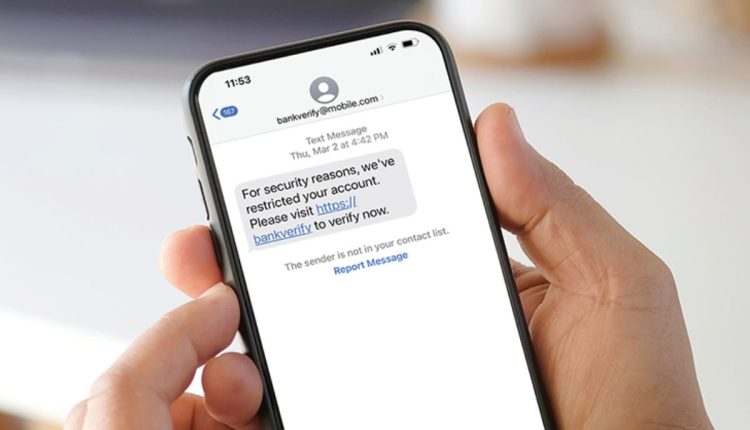How to Spot a Smishing Text Message
As technology continues to advance, so do the tactics employed by cybercriminals to target unsuspecting individuals. One such method gaining popularity is “smishing,” a portmanteau of SMS (Short Message Service) and phishing. Smishing involves sending deceptive and fraudulent text messages to trick recipients into divulging sensitive information or clicking on malicious links. This article aims to educate readers on how to identify and protect themselves from smishing attacks.
Understanding Smishing and Its Dangers
Smishing is a form of social engineering where attackers use text messages to manipulate recipients into performing actions that compromise their security. These messages often pretend to be from reputable organizations, banks, or service providers, luring recipients with enticing offers or alarming warnings to evoke a sense of urgency.
Watch out for Urgency and Threats
One common trait of smishing messages is the use of urgency and threats to pressure recipients into immediate action. They may claim that your bank account is locked, a package is awaiting delivery, or your account needs verification. The urgency creates panic, leading victims to act impulsively without carefully assessing the situation.
Examine the Sender’s Number
Pay close attention to the sender’s phone number. Smishing messages often use phone numbers that look legitimate but might contain slight variations or unfamiliar country codes. Legitimate organizations usually have consistent contact information, so any deviation should raise suspicion.
Be Wary of Suspicious Links
Smishing messages often include links that lead to malicious websites designed to steal personal information or infect devices with malware. Hover over the link to preview the URL without clicking on it. If the link looks suspicious or doesn’t match the purported sender, refrain from opening it.
Avoid Sharing Personal Information
Legitimate companies will never request sensitive information like passwords, Social Security numbers, or credit card details via text messages. Be cautious and avoid sharing such information through texts, as it’s a clear sign of a potential smishing attempt.
Grammatical and Spelling Errors
Smishing messages may contain grammatical and spelling errors, as cybercriminals often operate in haste. These mistakes can serve as red flags to alert you to the message’s fraudulent nature.
Verify with the Sender
If you receive a message from a supposed organization or service provider, take a moment to contact them directly using their official contact information. Confirm whether the message is genuine or a smishing attempt before taking any action.
Keep Your Devices Updated and Secure
Maintain up-to-date antivirus software on your devices to protect against potential malware threats. Additionally, keep your operating system, apps, and security patches updated to minimize vulnerabilities that attackers might exploit.
Smishing attacks continue to evolve, making it essential for individuals to stay vigilant and adopt proactive measures to safeguard themselves from potential threats.
FAQs about Smishing
1. What do smishing messages typically contain? Smishing messages often include urgent requests, offers, or warnings to trick recipients into taking immediate actions that compromise their security.
2. How can I identify a smishing link? Hover over the link without clicking on it to preview the URL. If it appears suspicious or doesn’t match the sender’s claimed identity, it’s likely a smishing link.
3. Should I respond to a smishing message to confront the sender? No, it’s best not to respond directly to a smishing message. Instead, verify the message’s authenticity with the supposed sender through their official contact channels.
4. Can smishing messages contain malware? Yes, some smishing messages may include links that lead to websites infected with malware designed to compromise your device and steal sensitive information.
5. How can I report a smishing attempt? If you receive a smishing message, you can report it to your cellular carrier and forward the message to 7726 (SPAM) to help combat such scams.
In conclusion, In an increasingly digital world, it’s crucial to be cautious about the information we share and the messages we receive. Smishing can be a potent tool for cybercriminals to deceive and manipulate unsuspecting individuals. By understanding the common tactics used in smishing attacks and staying alert, you can significantly reduce the risk of falling victim to these scams.

